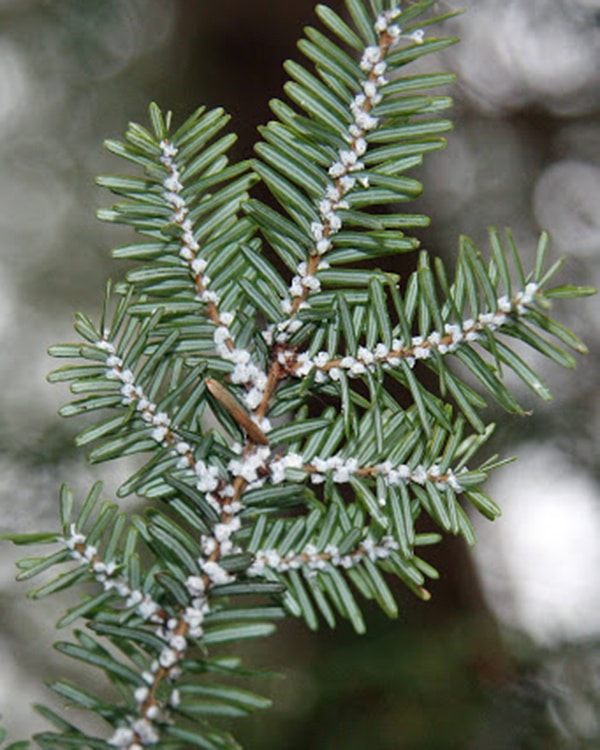Posted on October 30, 2020 in ASRC News, Environmental Sciences Initiative, Featured News
What do you do when there are tiny bugs destroying a critical species across a huge, economically important region? You turn to outer space for help. And researchers from the ASRC are leading the way.

The hemlock woolly adelgid is a newly discovered invasive species in the Adirondack region. This aphid-like insect from Asia feeds on the needles of the eastern hemlock and has the potential to wipe out these trees from the region. It’s an urgent problem, and is cause for concern among Adirondack locals.
Eastern hemlocks are a foundation species, which means they define and structure the ecosystems they inhabit. In much of its range, the eastern hemlock it is the only tree species that creates evergreen forests. Eastern hemlocks also have amazing longevity: They can live in excess of 400 years, which lends stability to the forest and creates unique microenvironments for local wildlife. Local extinction of these trees could drastically change the ecosystem and have cascading effects on the rest of the environment.
“There is really no species that is capable of filling the niche that hemlocks currently occupy,” said Professor Andrew Reinmann, a member of the ASRC Environmental Sciences Initiative who has long studied forests in this region.
Moreover, the entire Adirondack region is important to conserve as it comprises one of the largest wildernesses east of the Rocky Mountains and is home to the largest expanses of old growth forests in the eastern United States.
Reinmann and his team — which includes Ph.D. student Kelsey Parker, M.S. student Hasi Fnu, ASRC environmental science researcher Anthony Cak, and laboratory technician Clare Kohler — are using satellite imagery from NASA and the European Space Agency to monitor the health of the eastern hemlock forest.
“Because hemlock woolly adelgid causes needle mortality, loss, and declines in chlorophyll content, we can detect how it impacts forest health from space using this and other indices,” Reinmann said. Along with an understanding of the distribution of this species, he and his collaborators are able to focus on the areas that are most in need of help.
Once an infestation is identified and mapped using satellite imagery, a field crew can be deployed to manage the problem using chemical or biological treatments that aim to contain and eliminate the infestation. The hope is that by identifying infestations early, the spread of the hemlock woolly adelgid can be slowed and possibly contained.
So why is this happening now? Climate change may be part of the answer. One of the factors believed to limit northward expansion of the invasive adelgid is cold temperatures. But as the climate warms and cold temperatures become less common, northward spread of these insects may be increasing.
Environmentally, this work is likely to save many species of wildlife, but for Reinmann this research is also personal. “The Adirondacks hold a special place in my heart as this is where I hiked my first mountain and fell in love with wilderness.”
